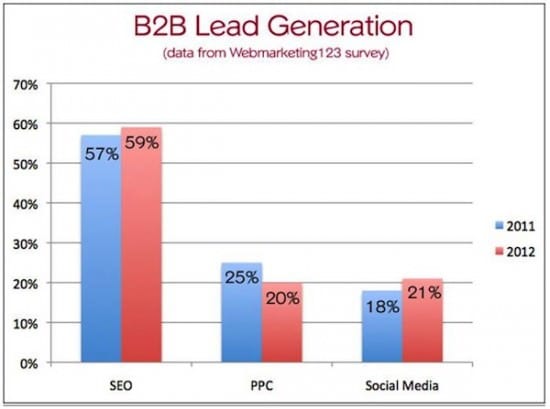A quick guide to finding out
A recent article published on Optify highlighted some surprising data on use of PPC which stated:
57 percent of (B2B) marketers spent no time on Pay Per Click, and only 4 percent spend more than 15 hours per week.
I found this a surprising statement and it made me wonder if experiences shared by marketers who "fell out of love with PPC" has led to B2B marketers abandoning the channel all together? I hope not, I don't believe it is about all or nothing in PPC, I think you can find that sweet spot where you target spend carefully to get the return on investment you need.
The data from this survey certainly suggests there are missed opportunities in Pay Per Click using AdWords.

The Optify data also suggests a decline in sites using Paid search.

How to find the sweet spot for PPC?
The approach of finding the sweet spot in media investment can apply for any marketing channel, but specifically here it's for those readers managing PPC for companies or indeed managing agencies.
When I was managing PPC client-side, investment in PPC was often seen as a route to solve day to day / week to week sales target challenges. I often had the conversation with the MD and wider group with this comment starting the conversation:
Can we not just spend more in PPC to increase sales volume?
I always found this an interesting comment, since regardless of the cost and ROI implications, it suggests PPC is a unlimited source of sales. Of course the answer was always something like:
We could, but it would involve generating demand through targeting the non-product aware, higher up the purchase funnel so requiring new landing pages and follow-up email and remarketing communications. We could expect a positive ROI (in a pure media spend sense, not time spent) over 3 months+
So it's not an easy pitch to make. PPC is too unpredictable as a channel, it's a consistently changing environment whether thats due to the search engines algorithm or because some new competitor decides to invest loads into the channel and suddenly your position changes, traffic drops and as does sales...
The section below is aimed at helping you identify the appropriate time and spend to maintain a profitable PPC channel over "just stopping".
To find the PPC sweet spot we firstly need to go back to our objectives, which have to be ROI. If I invest £1, I need £5 back is a simple example of a target. There will naturally be a suite of performance indicators to sit alongside it but you need one commercial metric for everything else to feed into. You then need to understand the following areas:
- What % of sales are generated by PPC vs other channels (first heard + assisted conversions)
- What % of your marketing budget is spent on PPC (Media + staff / agencies)
- What is the current ROI of PPC and has it ever met it's objective
- Was their a reason for hitting the objective? more focussed? freak month? lower spend?
I would recommend looking at your last fiscal year as a whole and then year to date. Armed with the data above you need to consider the following:
- Does your time / resource balance appropriately match where sales are generated?
- Is PPC generating the right levels of ROI?
- Are the right people, process & foundations in place to optimally run PPC?
- Are you asking too much of PPC? Should you re-focus the keywords, go for quality not quantity and re-invest spend elsewhere (content or product for example)
My experience in PPC taught me that there was a level of spend that was the ideal to generate a good ROI consistently. Finding this time, resource and spend sweet spot will allow you the time, energy and focus to grow and differentiate your business.
Key Points
- PPC management is a commodity skill so relatively low cost
- Once you have a solid base (structure, landing pages, reporting process) it is a relative simple channel to maintain
- It is very process driven and well documented online
- It will have activity ups and downs (new products, campaigns, new territories etc)
- You can make use of Google Analytics custom intelligence alerts to prompt you of large performance changes (good or bad) so you don't have to worry about performance daily. You will be alerted when you need to be worried






